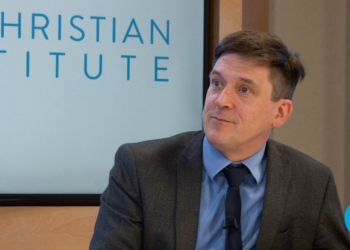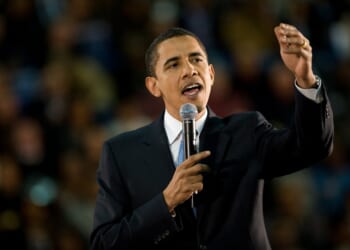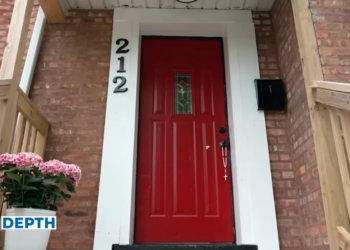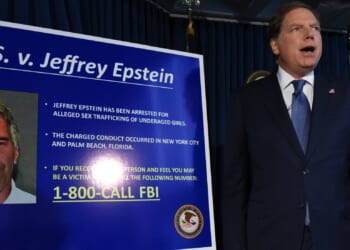Elliot Keck is the Head of Campaigns for the Taxpayers’ Alliance.
Shirebrook, Peterlee, Whitelackington, Mixbury, Meavy, Kingswood. These are places that, unless you are from there, you are unlikely to ever have heard of.
There’s no reason why you should have. Relatively unremarkable places, what they have in common is that they are all home to an unusual governing arrangement. They all have parish, or town, councils.
I say unusual, but in fact these councils, the lowest tier on the rung of local government, actually cover 91 per cent of England by land area, even if they only cover just over a third of the actual population. Beyond the hilariously chaotic meeting of Handforth Parish Council at the end of 2020, and the dispute over whether or not Jackie Weaver did have any authority (spoiler: she didn’t), these town halls often don’t even make local news, let alone national news.
That may be about to change, though. Or at least, it probably should change according to our new report on parish councils at the TaxPayers’ Alliance.
Firstly, what exactly are parish councils, and how do they fit into the hierarchy of local government? Probably their defining characteristic is that they truly are local, hyper-local in fact. There are 9,000 of them covering just 32 per cent of the population in England. That means the average parish council covers just a few thousand people, and likely also represents a clearly defined local area, rather than what is often a random line drawn across a map. Unlike, say, North Yorkshire council where a resident could live well over an hour away from the town hall, a parish council is likely to be based down the road.
What really makes them distinct though is that they don’t actually have any statutory services to carry out. While there are rules about how they should be managed and organised, there is nothing about what they actually do. The sole exception to this is that the planning authority for the area has to consult them whenever a planning application pertains to the area the council covers.
What they can do, however, is raise revenue, through a parish precept, which is levied on top of council tax bills. With this revenue they can perform a range of services, most commonly things like maintaining cemeteries and war memorials, installing public toilets, managing flower beds, adding public benches, and introducing local noticeboards.
This is all stupefyingly uncontroversial stuff which most would agree enhances the appeal of an area. It’s one of the reasons why parish councils are generally held in high regard – the “unsung heroes of local government” according to the chair of the National Association of Local Councils.
And with the expansion of unitary authorities, and thus the abolition of more local district councils, the importance and number of parish councils could be set to grow. More significantly, given the pressures on statutory services, most notably SEND and social care provisions, the pressure on parish councils to provide non-statutory but important services could increase.
This really matters because one other thing that makes parish councils distinct is that there is no referendum cap on their council tax rises. They can increase local rates by whatever they want, with no democratic accountability outside of elections, which take place in four year cycles. That’s leading to some whacky increase in percentage terms, even if they are small in nominal terms. Wharton, in Westmorland and Furness, one of the new unitaries, increased their parish precept by 1,783 per cent between 2023-24 and 2024-25. Although that was from £1.67 to £31.45. Whitelackington, in Somerset, again another unitary, increased theirs by 812 per cent, from £6.99 to £63.78. Obviously these are small rises in actual money out your pocket terms. But they come on top of the tax rises levied by the upper tier councils, and the fire service, the police force.
And in many places the tax rises from parish councils are far from small. Take Taunton, where the parish council precept increased by 173 per cent from £110 to £299. That is more in both percentage and nominal terms than the increase levied by the unitary authority which they sit under, where the Band D bill increased from £1,729 to £1,858. It meant that in just one year residents saw their bills go up from £2,218 to £2,555 for a band D property, an increase of £337 in just one year.
Notably, Somerset is one of the new unitary authorities that came into being in 2024. Having been set-up it quickly indicated to parish councils that they would have to start paying for things like public toilets and CCTV.
This is a dangerous trend and for millions of people could turn parish council precepts into one of the most painful of all the stealth taxes.
With parish councils increasing in importance, it’s now time for Westminster to take them more seriously. Our new report includes concrete recommendations on what should be done. Key to this is the introduction of a referendum cap, as exists with other types of local authorities. It would be sensible to set both nominal and percentage caps, with parish councils allowed to increase rates by the higher option. This would avoid a case like Wharton, where it would take almost 20 years for a £1.73 rate to even reach £10. But it would also stop a case like Taunton.
There are many benefits to parish councils, and they should be treated with the respect they deserve. But with that respect should come an end to the wild west nature of the regulations around them.



![Former Bravo Star Charged After Violent Assault Using a Rock-Filled Sock in Tennessee Walmart [WATCH]](https://www.right2024.com/wp-content/uploads/2025/07/Former-Bravo-Star-Charged-After-Violent-Assault-Using-a-Rock-Filled-350x250.jpg)
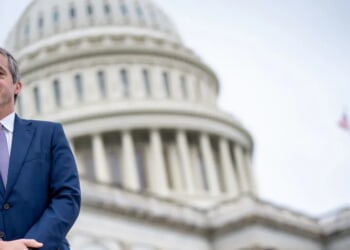


![Illegal Alien Walked Free After Decapitating Woman, Abusing Corpse for Weeks [WATCH]](https://www.right2024.com/wp-content/uploads/2025/07/1753013138_Illegal-Alien-Walked-Free-After-Decapitating-Woman-Abusing-Corpse-for-350x250.jpg)
![NYC Man Snatches Child Off The Sidewalk, Parents Chase Him Down [WATCH]](https://www.right2024.com/wp-content/uploads/2025/07/NYC-Man-Snatches-Child-Off-The-Sidewalk-Parents-Chase-Him-350x250.jpg)
![Man Arrested After Screaming at Senators During Big Beautiful Bill Debate [WATCH]](https://www.right2024.com/wp-content/uploads/2025/06/Man-Arrested-After-Screaming-at-Senators-During-Big-Beautiful-Bill-350x250.jpg)
![Karoline Leavitt Levels CNN's Kaitlan Collins and Other Legacy Media Reporters [WATCH]](https://www.right2024.com/wp-content/uploads/2025/07/Karoline-Leavitt-Levels-CNNs-Kaitlan-Collins-and-Other-Legacy-Media-350x250.jpg)
![Leftists Lose Their Minds After Jason Kelce Celebrates Being an American [WATCH]](https://www.right2024.com/wp-content/uploads/2025/07/Leftists-Lose-Their-Minds-After-Jason-Kelce-Celebrates-Being-an-350x250.jpg)

